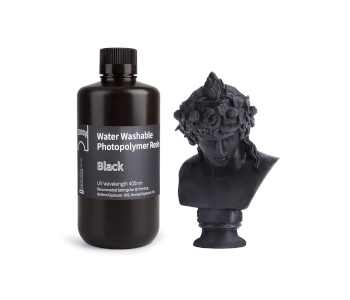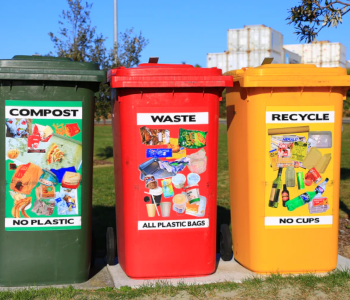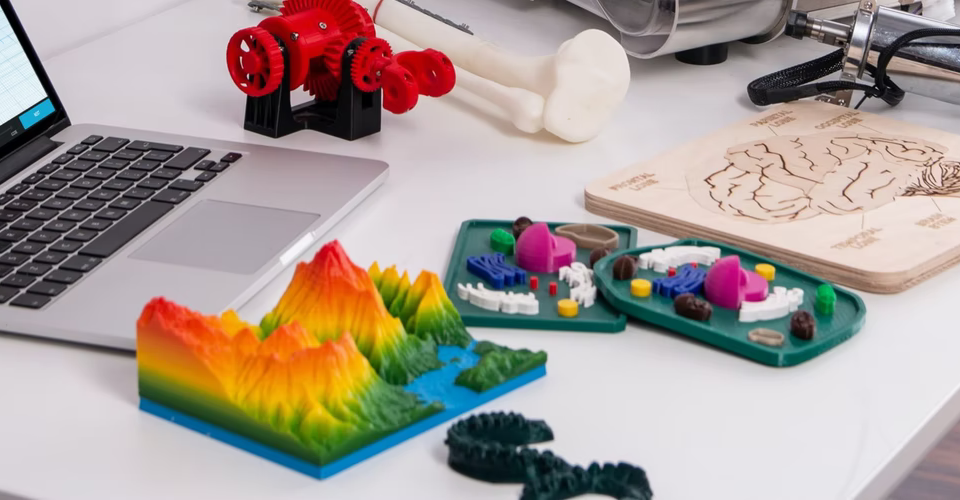How to Wash Resin Prints
It was not so long ago when resin-based 3D printing was described as “not for beginners.” While resin printing is not technically difficult, it can be quite a messy activity. One step that can potentially make a mess is washing.
Uncured resin has to be rinsed off using 99% isopropyl alcohol. It’s best to do this using either a commercial rinsing station or DIY rinsing vats or basins. Five to ten minutes of rinsing should be enough. More importantly, be sure to wear the proper protective equipment as contact with uncured resin can be very harmful. Also, practice proper disposal methods for any item or solution that has come in contact with uncured resin.
Check out our detailed guide on how to properly and safely wash your resin prints
Why do you need to wash resin prints?

Resin 3D printing has often been criticized as a very messy process. This mostly comes down to having to handle the liquid resin. Not only can this resin create a mess by dripping or spilling, but it’s also a toxic compound.
Right after resin printing, the resin is still in a “green” state. While it has been cured enough to maintain its form, it still has not reached the level of optimum strength and rigidity. Moreover, there will inevitably be a lot of excess resin on its surface. If your model is hollow, then there will also be resin inside the model even if it has drain holes.
Rinsing the excess resin ensures that the fine details of your 3D printed model are retained after curing. It also makes the model much easier and safer to handle as it removes the potentially dangerous uncured resin.
DIY vs. brand-name washing systems
At this point, you have two options – to buy a commercially available rinsing station or come up with a DIY solution. Obviously, the DIY method is much cheaper but is less convenient than buying a pre-assembled rinsing station. Both these methods will require that you have a healthy stock of 99% isopropyl solution. You’re going to need a lot.
Commercial rinsing stations

Most of the big brands that offer resin 3D printers also offer 2-in-1 rinsing and curing stations. These are standalone devices that have built-in UV lamps and turntables.
The rinsing step often involves submerging the model and build plate over a container with isopropyl solution while a rotating mechanism agitates the solution. This is very effective. Some models even include brackets that can be attached to the build plate so that your hands never need to come in contact with the uncured resin.
There are two limitations to this approach. The first is that these commercial rinsing stations are made to be compatible with specific resin printer models. This means that the rinsing vats are measured specifically to the build plate of the printer. An example is the ELEGOO Mercury 2-in-1 Washing and Curing Machine paired with ELEGOO Mars resin printer.
The second drawback is that you will likely be spending more on a commercial resin washing station. Most of these products cost a little more than $100. On the flip side, the fact that these products provide both washing and curing solutions makes them quite a good deal. If you need both, then you should consider getting a pre-assembled 2-in-1 washing and curing station.
DIY rinsing stations
If you just need a resin washing station, then it seems more practical to just make one yourself. Resin washing isn’t a complex operation, and you can make do with just about any plastic container large enough to submerge your resin prints.
We recommend having two such containers. The idea is that one of these will be the primary wash while the other will be the finishing wash. The primary wash will inevitably end up with a higher concentration of uncured resin and will have to be replaced more frequently. The finishing wash will help rinse out any residual resin with a relatively fresher batch of isopropyl alcohol.
To minimize handling of the uncured print, we also recommend using plastic strainers as a sort of false bottom for the washing containers. This will allow you to lift the uncured print without having to touch them with your hands or straining them with tweezers or tongs. It would be better if the strainers can be lifted without having to submerge your hands in the isopropyl solution.
How long should you wash in isopropyl alcohol?
The rule of thumb is that five to ten minutes should be enough to remove any uncured resin from the print if washing is coupled with agitation. However, this washing time can be extended for exceptionally large prints or those that have large hollow spaces or channels. A maximum of twenty minutes can be observed but is rarely necessary.
After washing, the next step would be to cure the resin prints. This can be done in a UV box or under direct sunlight. Curing in a UV box is recommended as it can be done in less than 5 minutes. If you plan to make lots of resin prints, a UV box is certainly worth the investment.
Safety measures
We cannot stress enough that uncured resin is harmful, both to people and the environment. Handling uncured resin is probably the most daunting thing about resin printing. You can get used to it eventually, but you will always have to be diligent about practicing these safety measures.
Wear the proper PPE

When handling uncured resin, you will at least need to have gloves and eye protection. Nitrile gloves typically fare better than latex gloves, but these should still be treated as disposable after every use. Heavy-duty latex gloves might last longer but these will eventually still deteriorate after repeated contact with uncured resin. Any proper pair of safety glasses should do.
It’s also worth mentioning that you should dress appropriately when working with resin prints. If possible, wear long pants and fully covered footwear. You will want some protection for the bottom half of your body in case some of the resin spills or drips.
If you have to work with your resin printer for extended periods, then you may also want to wear some breathing protection to protect yourself from fumes. Make sure to use breathing protection that is rated for chemical vapors.
Be wary of spills
On the topic of spills and drips, you will have to accept that they will inevitably happen. Make sure that your workspace is equipped to handle such an accident. Get rid of any carpeted surfaces or any material that would be impossible to clean up if resin were to get in them.
Have towels on hand to clean up any spills quickly. It’s best to wipe surfaces with some isopropyl alcohol to remove any possible residue. You can also consider laying down some paper towels before transferring the print to the washing station to make clean-up easier.
Keep pets and children away
Make sure that your resin printer is in an isolated location where kids and pets cannot just wander in. This does not need much explanation – knowing the hazards of uncured resin should already be enough of a warning to prevent kids and pets from touching or ingesting it.
Isolate anything that comes in contact with uncured resin
Whenever you rinse your resin prints, keep an inventory of every single thing that comes in contact with uncured resin. This list should include your gloves, build plate, rinsing solution, and any towels you used to clean up spills. If you use a spatula or tweezers to remove the finished print from the build plate, then these should also be in the list.
These items should either be washed with isopropyl alcohol before reuse or treated properly before disposal. Tools in contact with uncured resin should be designated and used exclusively for this purpose.
Proper disposal of excess resin and rinsing solution

Proper waste disposal is a discipline that must be developed by anyone who goes into resin 3D printing. Since uncured resin is harmful to the environment, it must not be disposed of in its raw form. This applies to any other object that comes in contact with the uncured resin. This includes gloves, cleaning towels, empty resin bottles, and the isopropyl solution used to rinse the prints.
The most common way to handle any uncured resin is to simply cure it under direct sunlight. Cured resin is no longer dangerous. This is fairly simple to do for tools and equipment such as gloves and towels. Once the resin residue has hardened, the materials should be safe to dispose of along with the standard household waste.
Disposing of the isopropyl alcohol solution can take considerably longer. You will want to expose the entire solution under direct sunlight. This will result in both the curing of the resin in the solution and the evaporation of isopropyl alcohol.
At the end of the process, you should end up with minimal isopropyl and some bits of solidified resin. You can wait for the alcohol to completely evaporate or just filter out the solid plastics from the solution. Isopropyl alcohol can be safely disposed of on the sink.
If you’re very lucky, your local recycling facility may even be equipped to handle uncured resin. These facilities likely handle other hazardous household materials like paints, adhesives, inks, and other cleaning products. It would be best to give them a call and ask for advice on how the hazardous waste should be contained before being handed over.
Final thoughts
Washing is one of those extra steps that are unique to resin-based 3D printing. The actual washing step is quite simple, but what complicates it is that you will be handling toxic uncured resin. This complication is likely one of the biggest culprits for the reputation of resin printing as a more difficult 3D printing option.
Resin washing does not have to involve complex equipment. Some plastic containers will do, although going for commercially made washing stations is equally as valid. What is more important is practicing safety guidelines on the handling and disposal of uncured resin.


